High definition Multi-layer coating Soft Graduated ND filter
$88.90
- Brand: GiAi
- Product Code: GA-SGND
- Availability: In Stock
Graduated ND filter is one of the most important filters for photographic art creation.
Like ND Filter, the GND filter ( Graduated Neutral Density) can allow less light to enter the camera. As a graduated ND filter with half part transparent and half part dark, this enables you to reduce the part of the light. The difference between these 2 filters is that the GND filters only darken part of the image while the ND filter darkens the whole image.
-BEFORE & AFTER GND EFFECTS-
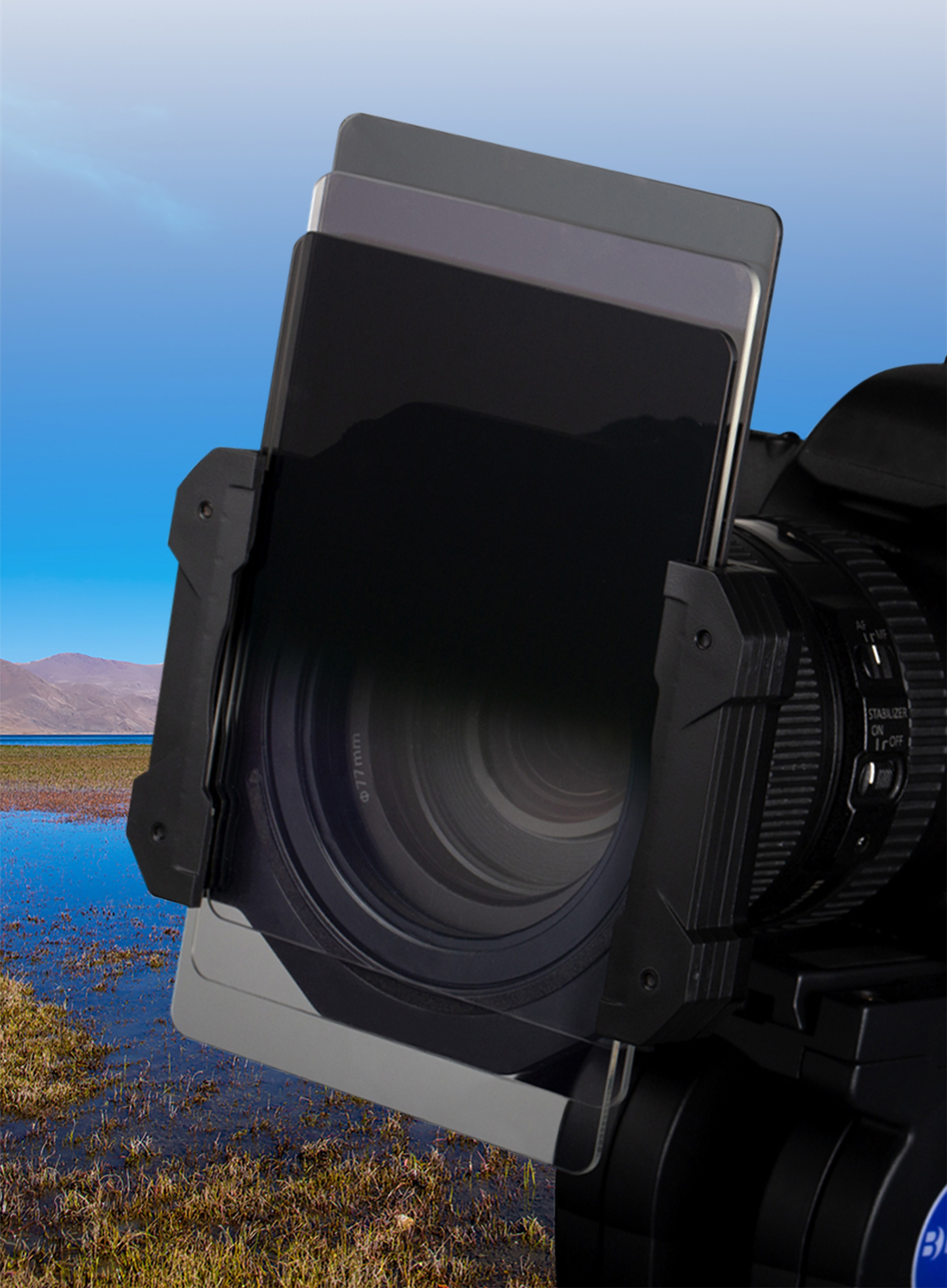
Usually defined by no obvious transition between the bright and dark area of the scene. Soft GNDs are therefore used where the transition between light and dark areas is not so clear. An example is a shot in a mountainous area, or trees etc.
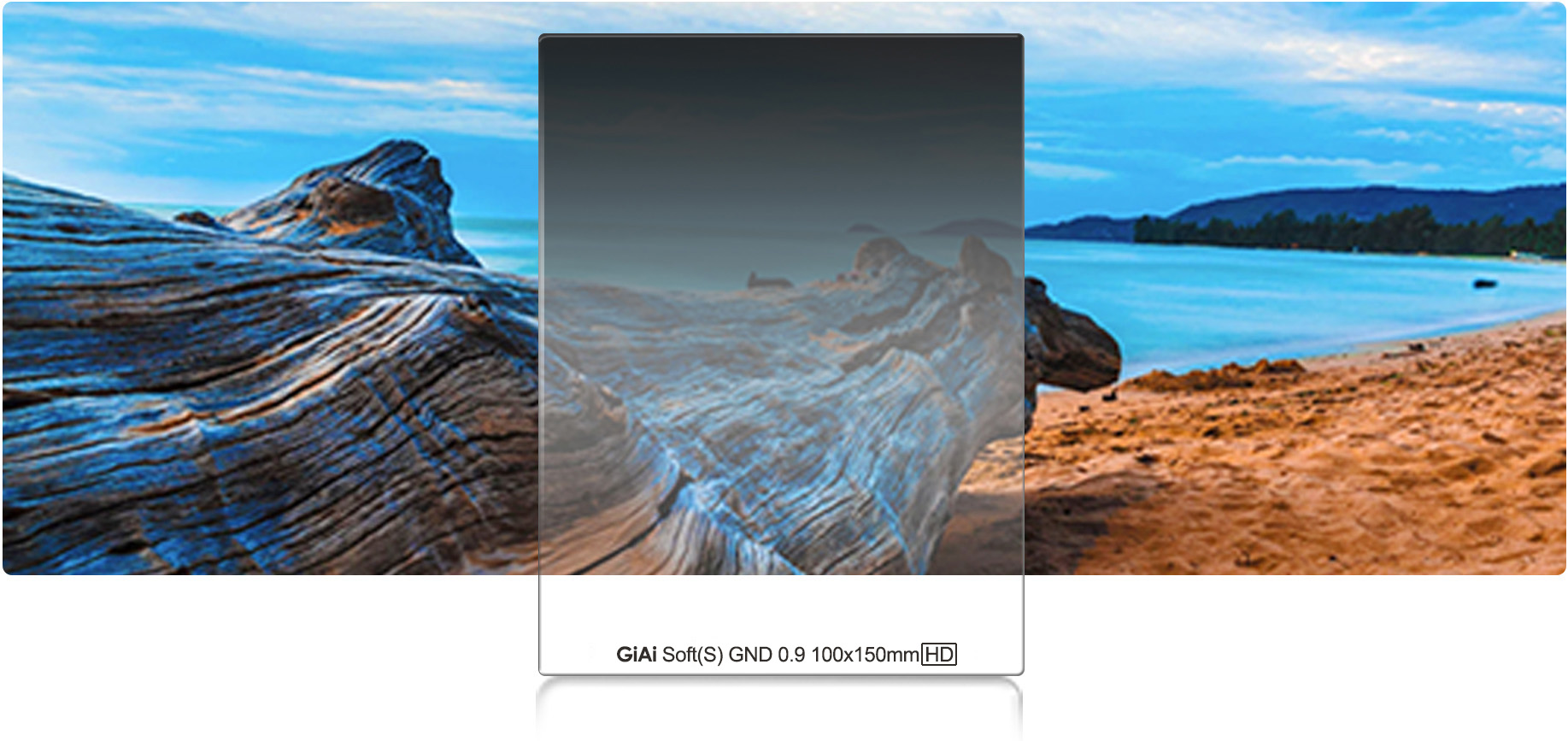
Soft Graduated ND filter
Usually defined by an obvious boundary between the bright and dark area of the scene. They are therefore used when the separation between the bright and the dark areas of the scene is very defined, such as the horizon line or the boundary between sea level and the sky.
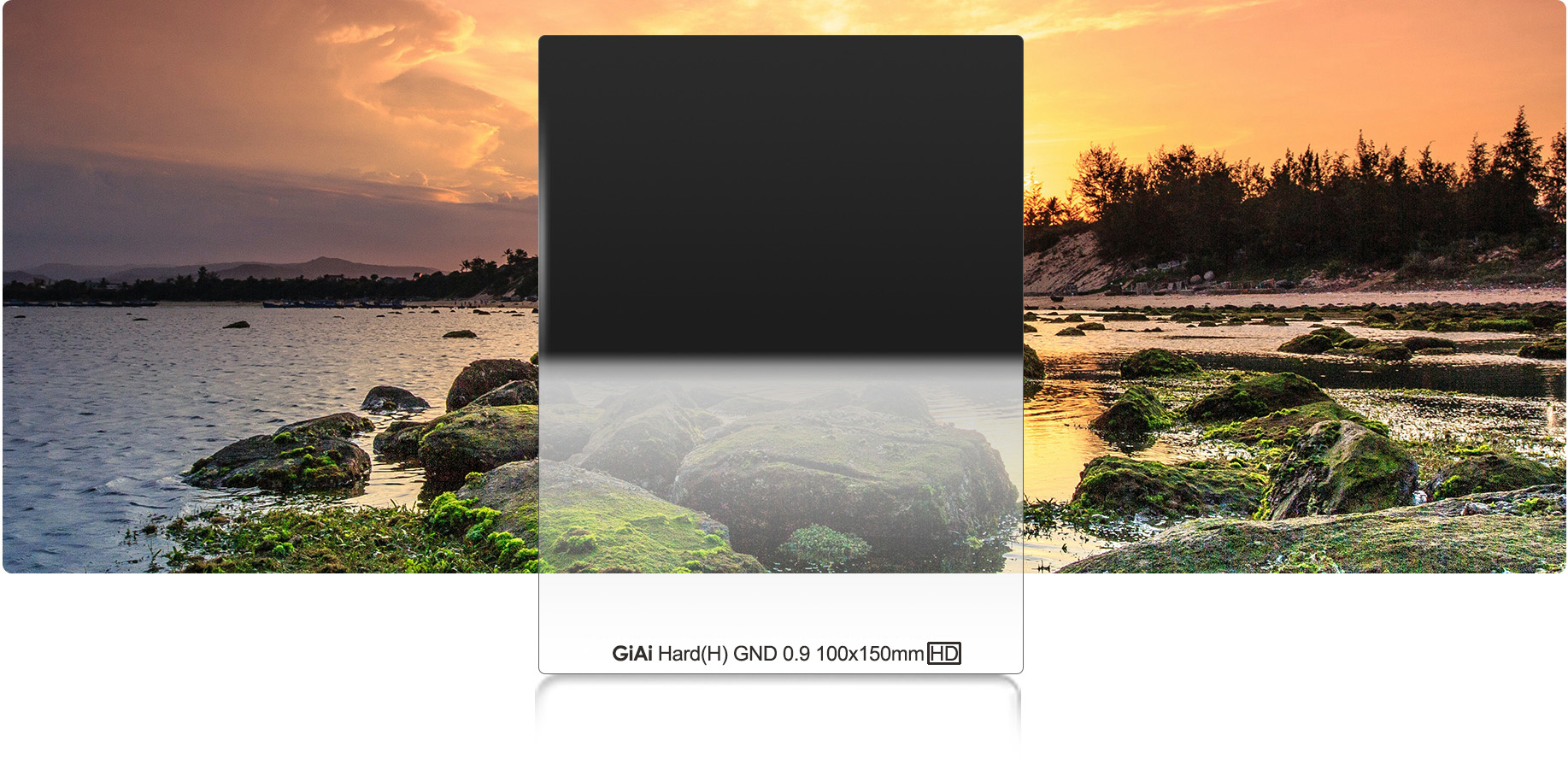
Hard Graduated ND Filter
Reverse GNDs are basically Hard GND filters with the darkest fading away from the further you move from the line of separation to the upper border of the filter. They are perfect for managing sunrises and sunsets, where the light is more intense on the horizon line. If you love shooting sunrise and sunset this filter is a must-have.
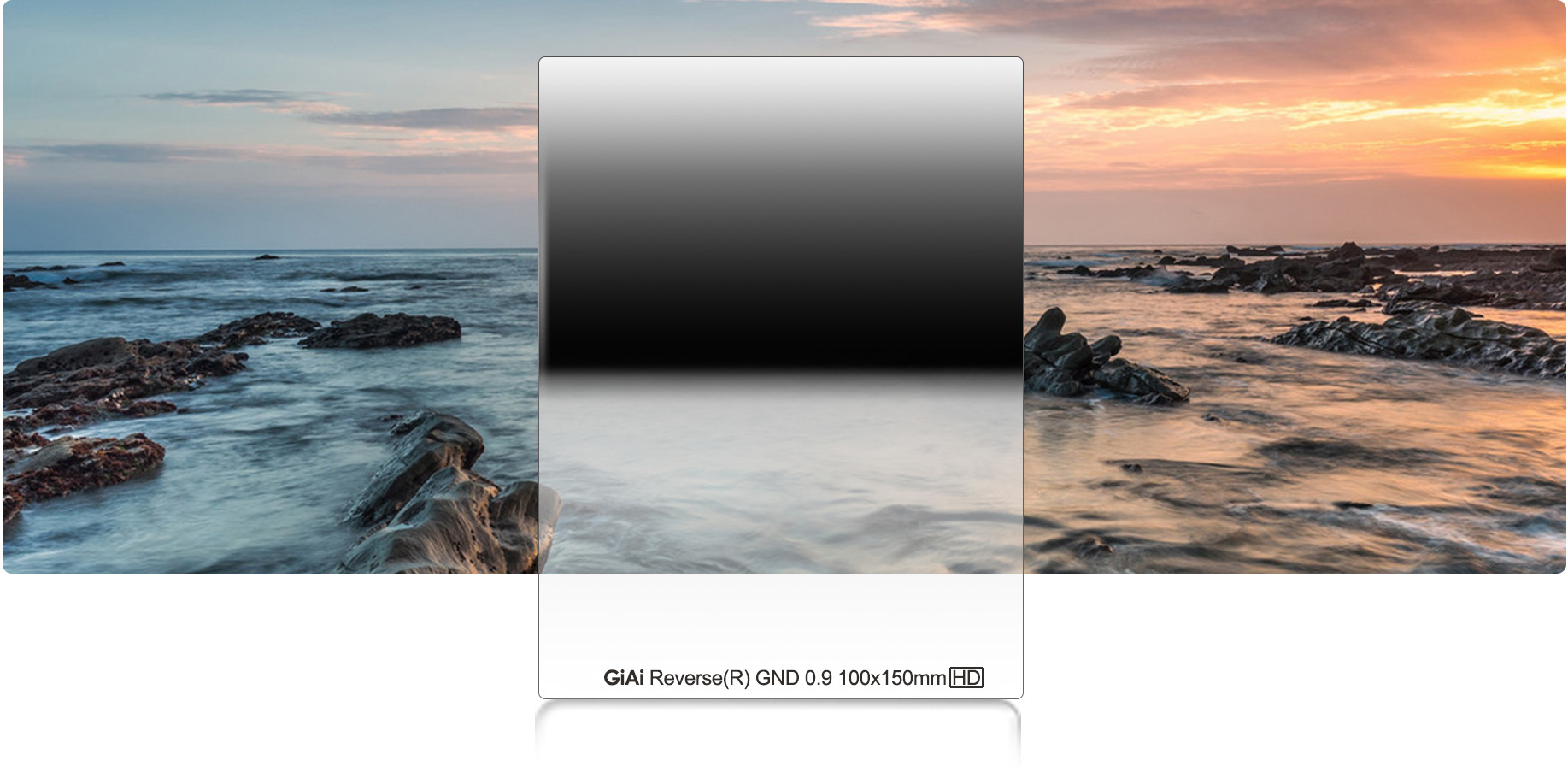
Reverse Graduated ND Filter
It is mainly used for sunrise and sunset photography. When the sun is going to set, the center is too bright and cause overexposure, while the top and bottom are dark. With the center graduated ND filter, you will get transition effect and even light, and detail of center area. Center graduated ND filter fills the gaps of soft graduated ND filter, hard graduated ND filter, and reverse graduated ND filter.
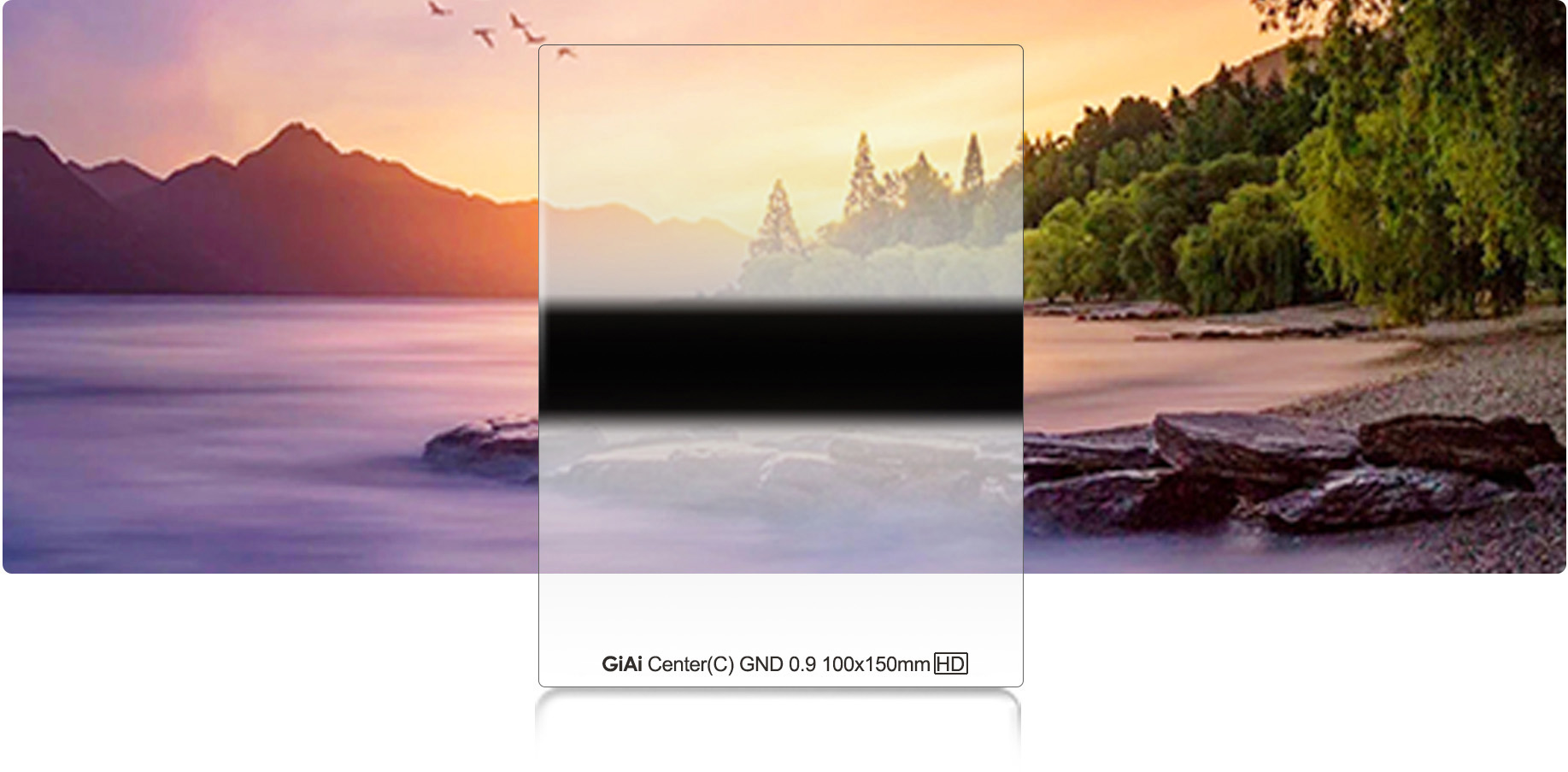
Center Graduated ND Filter
What a Graduated ND filter do?
Graduated ND Filters do a great job of balancing an image when there’s a big contrast between the foreground and sky.
The exposure of the sky drops way down. The landscape below that boundary is relatively untouched. It compresses the exposure range so that your light sensor can capture all of it. Otherwise, the sky usually loses all detail. It over saturates and you can see color or clouds.
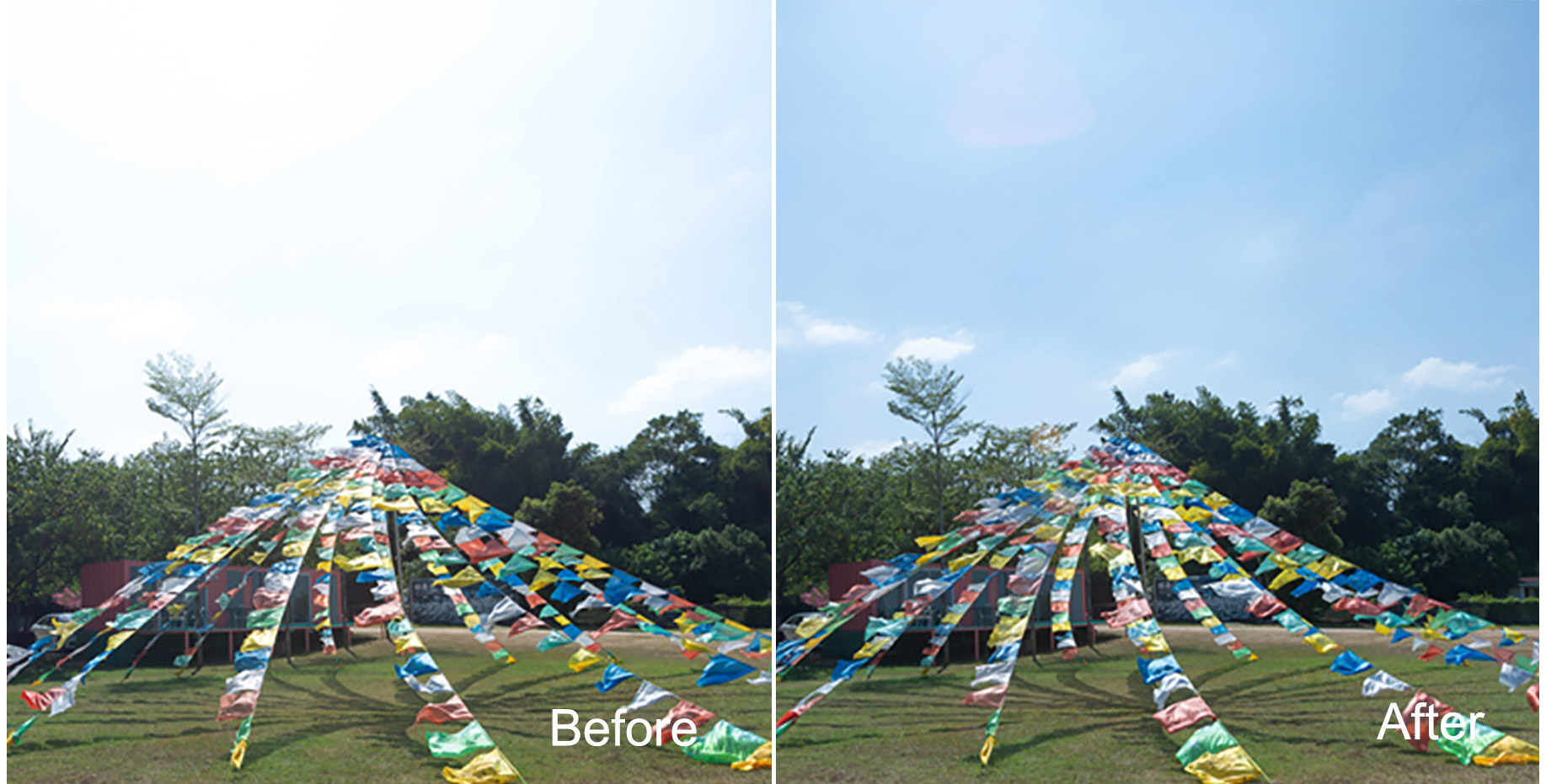
You can quickly see the difference between the two images - the sky and the foreground are both well-exposed. That's what a graduated ND filter does.
In such cases, a soft graduated ND is mounted because they transition much more gradually from dark to light.
You can see the difference between the previous image and the one immediately above when using a medium graduated ND.
The foreground remains well-exposed, but in the second shot, the sky has a beautiful definition that was totally lacking in the first shot.
One of the most common questions regarding photography is how to get both the foreground and the sky well-exposed.
Frustration might occur when you are shooting outside, you find either the sky is completely white or the landscape is way too dark. You’re also struggling to get the whole image correctly exposed. There are two solutions to your problem: Blending multiple images and Graduated ND Filters.
Even though graduated ND filters can make an overexposed sky correctly exposed, it’s not always the best choice. Remember that the transition between darkened and clear part of the filter is defined by a horizontal line. Anything above the line will be darkened. This is not something you want in every picture. If there is a mountain, tree or head of a person above the horizon this will also be affected.
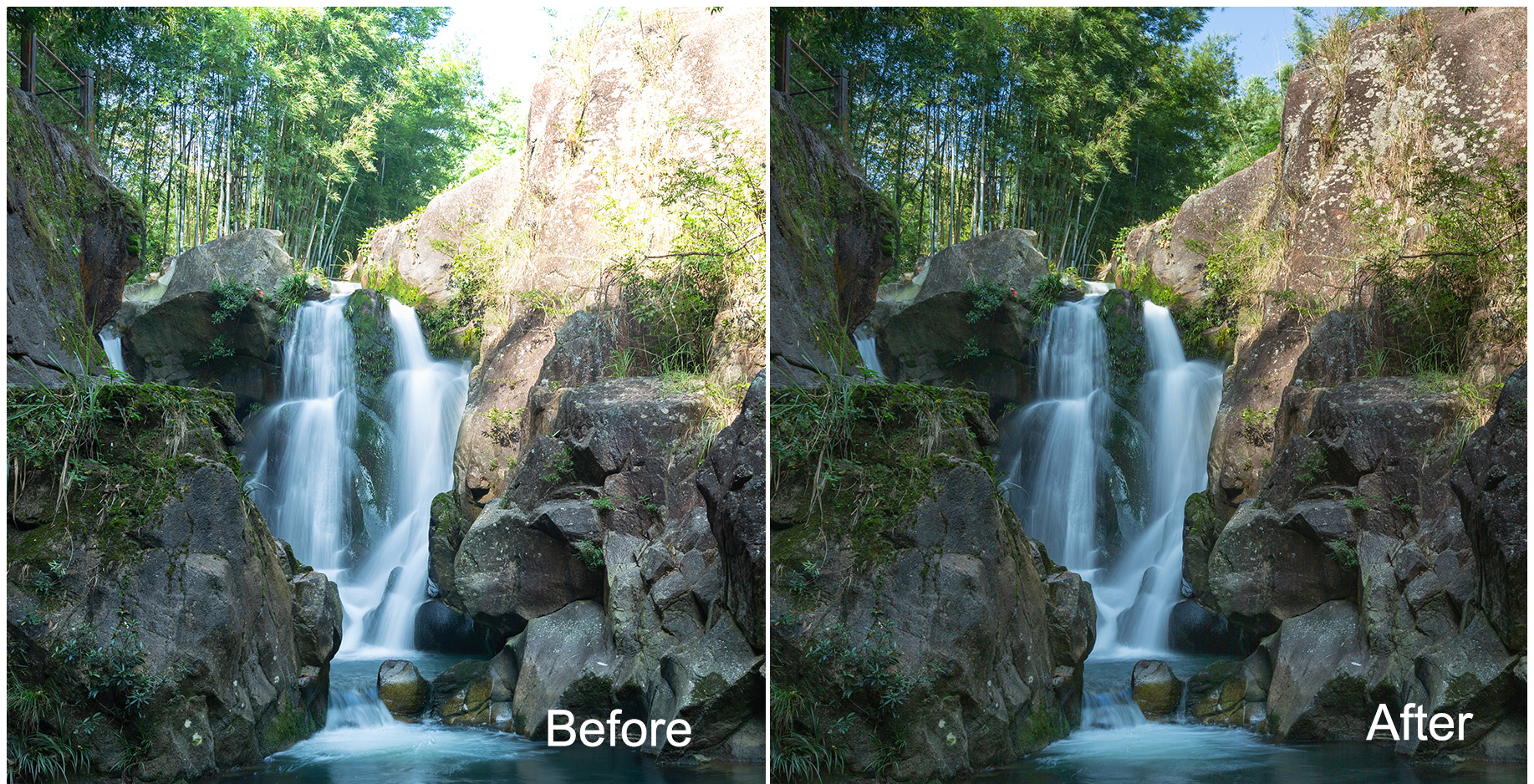
Tags: Graduated ND Filter